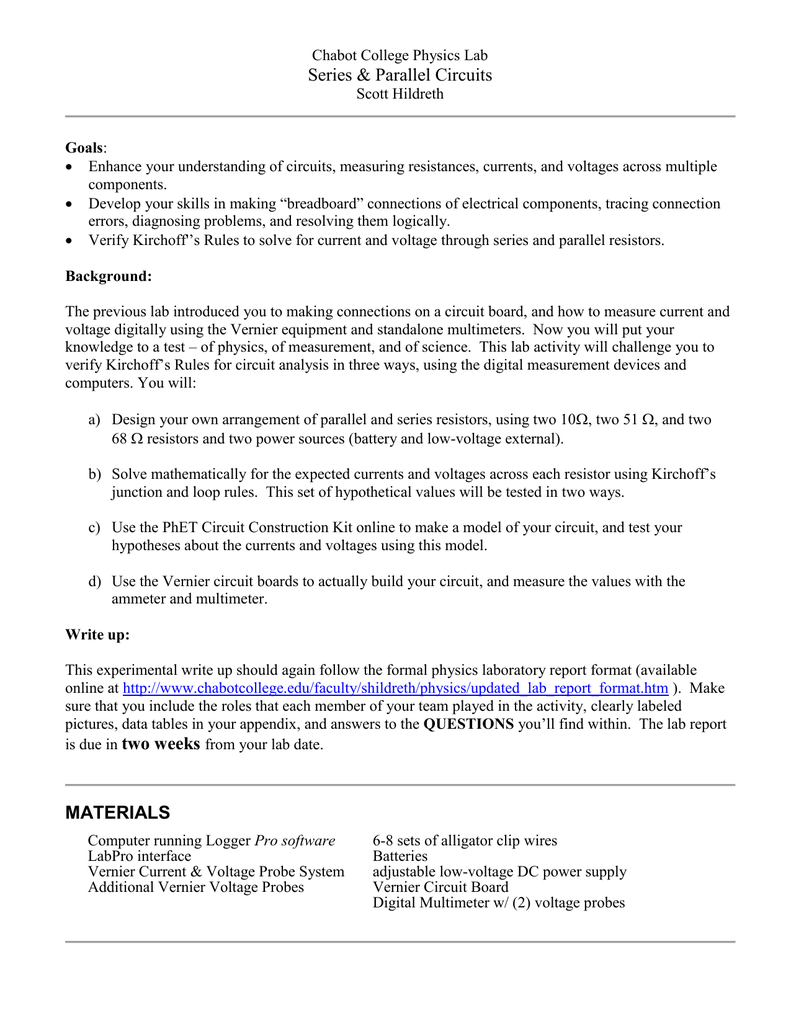Parallel and series circuits are some of the most important concepts in electrical engineering. They are responsible for a wide range of applications, from powering simple household devices to powering whole cities. In order to better understand these concepts, it is important to have a basic understanding of how they work and what their effects on electricity are. This article will discuss the conclusion of a series parallel circuit experiment and provide insights into the principles of electrical engineering.
The series parallel circuit experiment is a simple yet effective way to understand how electrical current flows through a network of components. It involves connecting two or more electrical components in sequence, with each component connected to a different electrical source. Each component is then tested to determine how the current is distributed throughout the circuit. By analyzing the data collected during the experiment, conclusions can be drawn about the behavior of the components and the overall power output of the circuit. In this article, we will discuss the conclusions reached after conducting a series parallel circuit experiment.
The experiment demonstrated that the current flow through the circuit is affected by the type of components connected together. For example, when using high-resistance components, the current will be decreased. On the other hand, when using low-resistance components, the current will be increased. This demonstrates that there is an optimal combination of components that will produce the desired output. Additionally, the experiment revealed that the total resistance of the circuit is determined by the sum of the individual resistances of each component. This means that if one component has a higher resistance, the total resistance of the circuit will also be higher.
The experiment also showed that the voltage output of the circuit is determined by the sum of the voltages of each component. This means that if one component has a higher voltage, the total voltage output of the circuit will also be higher. Finally, the experiment revealed that the current flow is affected by the type of wiring used. Different types of wiring can lead to different results in terms of current flow, so the experiment demonstrated the importance of selecting the right wiring for the job.
Overall, the series parallel circuit experiment was a successful demonstration of the principles of electrical engineering. It provided a clear understanding of how current flows through a network of components, how voltage output is determined, and how different types of wiring can affect the current flow. This knowledge can be used to better understand how electrical systems work, and how to design them for maximum efficiency.

Conclusion For Series Parallel Circuits In This Experiment We Managed Determine The Total Cur Flowing Through A Course Hero

Series Amp Parallel Circuits

Moving Charge Put To Use Ppt Online
Solved Elet 111 Lab 6 Parallel Circuit Objective 1 2 Chegg Com
Solved Lab 6 Series Parallel Networks And Reference Voltage Chegg Com

Cur Electricity Lab Series Parallel Circuits Safety And Equipment Precautions Pdf Free

11 2 Parallel Circuits Series And Siyavula
Lab 3 Series And Parallel Connections The Objectives Of This Are 1 To Check Kirchhoff S Cur Law Kcl From Prev

Resistors In Series And Parallel Combination Determination Of The Equivalent Resistance Two Procedure Faqs

Solved Lab 23 Exp 2 Post Labs Questions Kirchhoffs Laws Draw The Circuit Diagram For Series Include Multimeter In With Furst I Resistor And

Lab 5 Parallel Dc Circuits Objective Students Successfully Paws

And Il Because Cur Flow From The Branch Is Diffe Conclusion In Rl Course Hero

Series And Parallel Circuits Learn Sparkfun Com

Conclusion On Series And Parallel Circuits In This Experiment We Could Determine The Total Cur Course Hero

R L Lab Title Parallel Circuit Objective At The End Of This Experiment Students Will Be Able To 1 2 3 Connect Course Hero

Series Parallel Resistor Measure Compare With Practical Docsity

Rlc Series Circuit Experiment Pdf

Parallel Circuits Lab

Typical Experimental Results For The Cur Through Rlc Circuit Scientific Diagram
